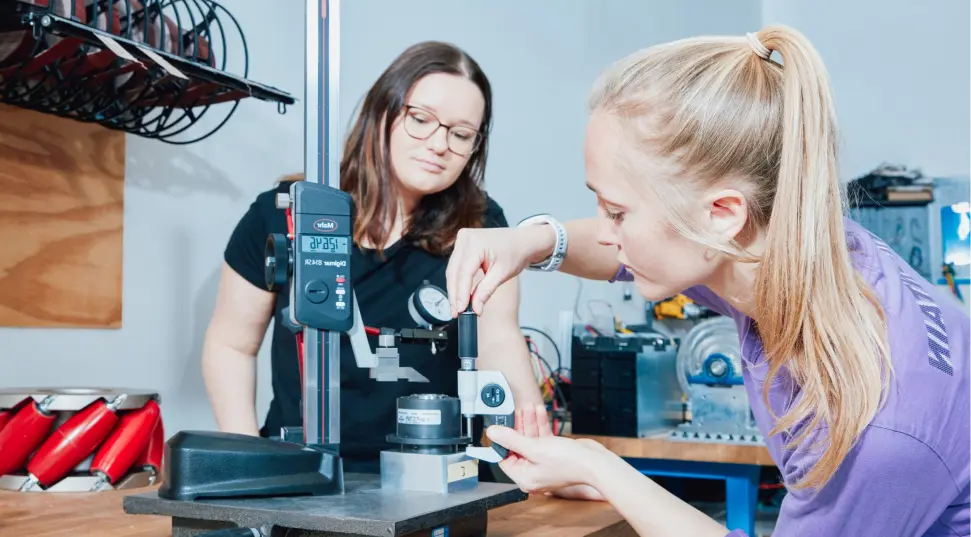In today's world, it's crucial to keep all phases of product development as lean and cost-effective as possible. To achieve this, it's helpful to define the specific goal of each product development phase. This way, you can navigate the entire process with focus, structure, and efficiency.
The 5 Phases of Product Development
A streamlined product development process can be divided into five phases:
Product Development Phase 1: Ideation
Product Development Phase 2: Proof of Concept
Product Development Phase 3: Prototyping
Product Development Phase 4: Minimum Viable Product (MVP)
Product Development Phase 5: Product Rollout
Each of these phases is essential for structured and efficient product development. The complexity and duration of each product development phase depend on the specific product. Therefore, they cannot be universally evaluated. However, it's important to set the right focus, especially in the initial phases of product development. Otherwise, there is a significant risk of developing a product for which there is no market demand.
On the following page, you will get an overview of the five phases of product development. We will explain the respective goals and key steps of each product development phase.
Product Development Phase 1: Ideation
The first phase of product development is ideation. While the term may quickly bring to mind internal brainstorming sessions, the focus of this product development phase is elsewhere.
The emphasis of this phase is on user needs. After all, you don't want to develop a product that consumers aren't actually seeking. Therefore, the goal of the Ideation Phase is to identify the pain points and needs of potential consumers. Subsequently, you develop product ideas based on these insights.
Design Thinking is the easiest way to keep your focus on the user during this product development phase. It is an iterative and proven problem-solving process that is perfect for the Ideation Phase of product development. While Design Thinking is a broad topic with various phases and numerous methods, it is an essential process in product development for user-centered work.
For the workflow in the product development process, follow these fundamental steps:
- Put yourself in the user's shoes from the outset.
- Define your user's goals.
- Begin generating ideas.
- Learn more about the methods suitable for each step and other important considerations in ideation and the remaining phases of product development in this PDF.
Product Development Phase 2: Proof of Concept
The second phase of product development is the Proof of Concept. The goal of the Proof of Concept is to demonstrate that your idea is technically feasible. This allows you to avoid unnecessary investments in product development.
Here's the best way to approach it:

In short, in this phase of product development, your aim is to demonstrate the feasibility of your idea. To do this, you create an initial technical concept as a Proof of Concept. For more details on the Proof of Concept and the other phases of product development, we have summarized them here for you.
Product Development Phase 3: Prototyping
In the third phase of product development, you create your first prototype. The phase of Rapid Prototyping is all about "iterate fast or go home."
The prototype is the initial physical representation of your product idea. It serves as the first model of the product, allowing you to test and evaluate your ideas. You also use it to gather user feedback. Therefore, in this phase of product development, it's essential to work closely with the customer and make rapid iterations. This ensures that your product is ultimately accepted in the market.
The key questions to consider in this phase of product development are as follows:

We have compiled a comprehensive overview of various methods and common pitfalls in Rapid Prototyping for you. You can find more detailed information on the other phases of product development there as well.
Product Development Phase 4: The Minimum Viable Product (MVP)
The penultimate phase of product development is the MVP, which stands for "minimum viable product." This means it's the "light" version of your final product. This phase of product development aims to optimize the product with the help of user feedback while still focusing on user needs.
The most significant difference between the MVP and your final product is that the MVP concentrates on a single core functionality. This functionality addresses the core problem of your user, with no fancy extras or frills. Instead, it provides a clear solution for a specific user need.
Unlike the prototype, this solution should be of sufficient quality that you could already offer the product in this phase.

Product Development Phase 5: The Product Rollout
The final phase of product development is the Product Rollout. This phase is typically the longest and most expensive part of the product development process. To avoid unnecessary costs, it is crucial to lay a solid foundation in the earlier phases of product development. This preparation allows for a smooth rollout.

This diagram provides a summary of all the relevant steps from your product idea to the rollout. By carefully navigating these five phases of product development, you can create a meaningful product that satisfies real user needs. Each phase of product development has helped you efficiently and customer-centrically bring your product idea to life, step by step.
Would you like to delve deeper into the individual phases?
We've put together a guide to help you develop user-centered products, enabling you to bring new products to market quickly and with a clear focus. In our 18-page PDF, we offer further insights into the various phases of product development. Additionally, you'll find additional resources to support lean product development. You can download it for free here.











